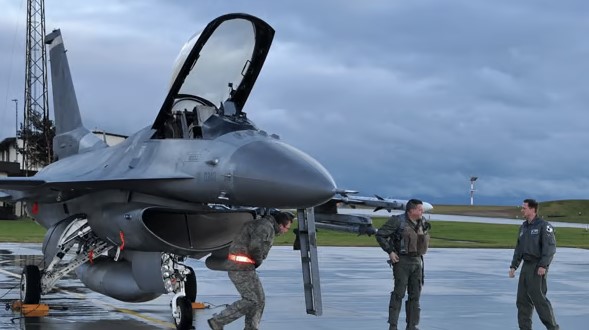Ukraine has started building underground shelters to protect its newly received F-16 and Mirage 2000 fighter jets from Russian attacks. These hidden shelters are designed to keep the aircraft safe while they are parked on the ground.
Ukraine Builds Secret Shelters to Protect Fighter Jets
The construction of these fortified shelters is part of Ukraine’s broader defense strategy to reduce damage from airstrikes and drone attacks.
The fighter jets were supplied by Western allies to boost Ukraine’s air force. However, protecting them on the ground is a serious concern, as Russian missiles frequently target Ukrainian airfields. To address this, Ukraine is now using multiple techniques—one of the most important being the construction of underground shelters to keep jets hidden from enemy view.
Ukraine carefully builds these shelters in secret locations to make it extremely difficult for enemy satellites and drones to detect where the military parks the real jets. By staying out of sight, the jets avoid becoming easy targets.
🚀 F-16 survival secret revealed – Ukraine’s air force turns truck garages into jet bases
In addition to hiding jets in shelters, Ukraine also deploys decoy aircraft at other air bases. These fake jets resemble real ones from the air and help trick enemy surveillance. They attract missile attacks and help protect the actual jets.
The use of secret shelters and decoys shows how Ukraine is combining traditional defensive methods with modern warfare strategies to protect its air power.
Mobile Units Support Jets Hidden in Shelters
Hiding jets inside shelters solves only one part of the challenge. Fighter jets like the F-16 need fuel, repairs, and mission planning support. Without this, they cannot operate effectively. To tackle this, Ukraine’s military, along with a defense support group, has introduced mobile platforms that move with the aircraft.
These mobile units include two main modules. The first is for aircraft maintenance and repair. The second is for planning missions and coordinating flights. Teams can quickly deploy both units to any location where they station the jets, including inside hidden shelters or on temporary runways.
F-16 Arrival Turns Explosive as Espionage Fears and Malfunctions Shake Bulgarian Air Base
Thanks to these mobile systems, F-16 jets can operate from various hidden bases, including civilian airfields. This flexibility allows Ukraine to avoid predictable flight patterns, which enemy forces could monitor and target. The ability to move both the jets and their support units keeps operations safe and unpredictable.
This method also ensures that jets stored in shelters don’t remain inactive. They can be maintained and prepared for missions without ever leaving their protected positions.
Dispersal Tactics Make Jets Harder to Target
Ukraine is also using a method called “dispersal,” where it spreads jets across multiple secret locations instead of keeping them at one large base. At many of these locations, Ukraine has specially built shelters that protect each jet individually. This way, even if an attack hits one site, only a small number of aircraft face risk.
This approach reduces the chances of losing many jets in a single attack. By keeping the jets spread out and hidden in individual shelters, Ukraine increases the survival chances of its air fleet.
Russia unleashes largest air raid of the war, Ukraine loses F-16 hero in battle
To add to the confusion, Ukraine continues to use decoy aircraft at known airfields. These decoys are designed to fool enemy surveillance tools. From the sky, they appear real, which can mislead Russian forces into attacking empty locations.
This multi-layered defense plan—using underground shelters, mobile maintenance units, decoy aircraft, and dispersal—gives Ukraine an edge in protecting its new fleet of fighter jets. It’s a strong example of how smart planning and quick thinking are being used to fight off high-tech threats.

